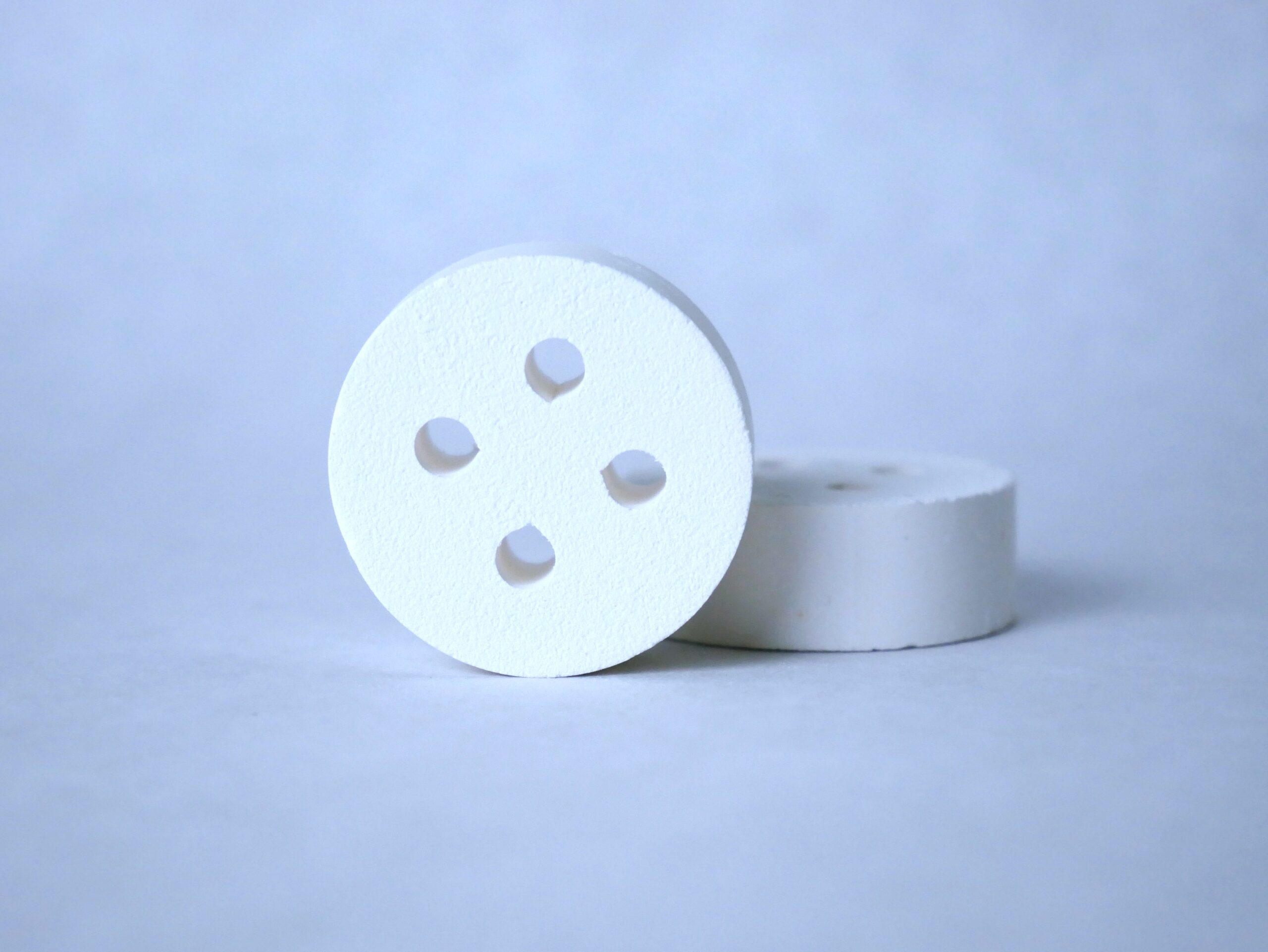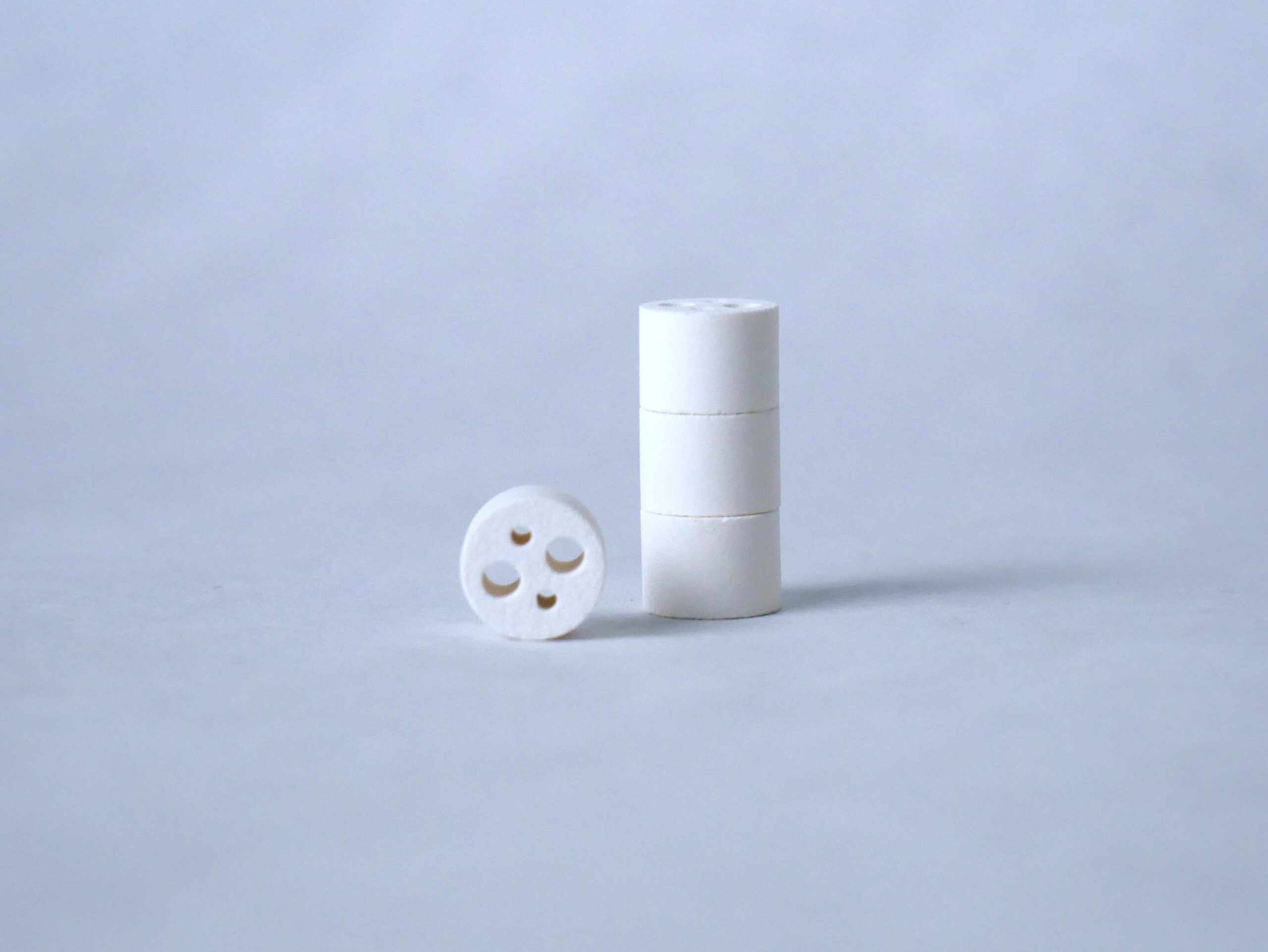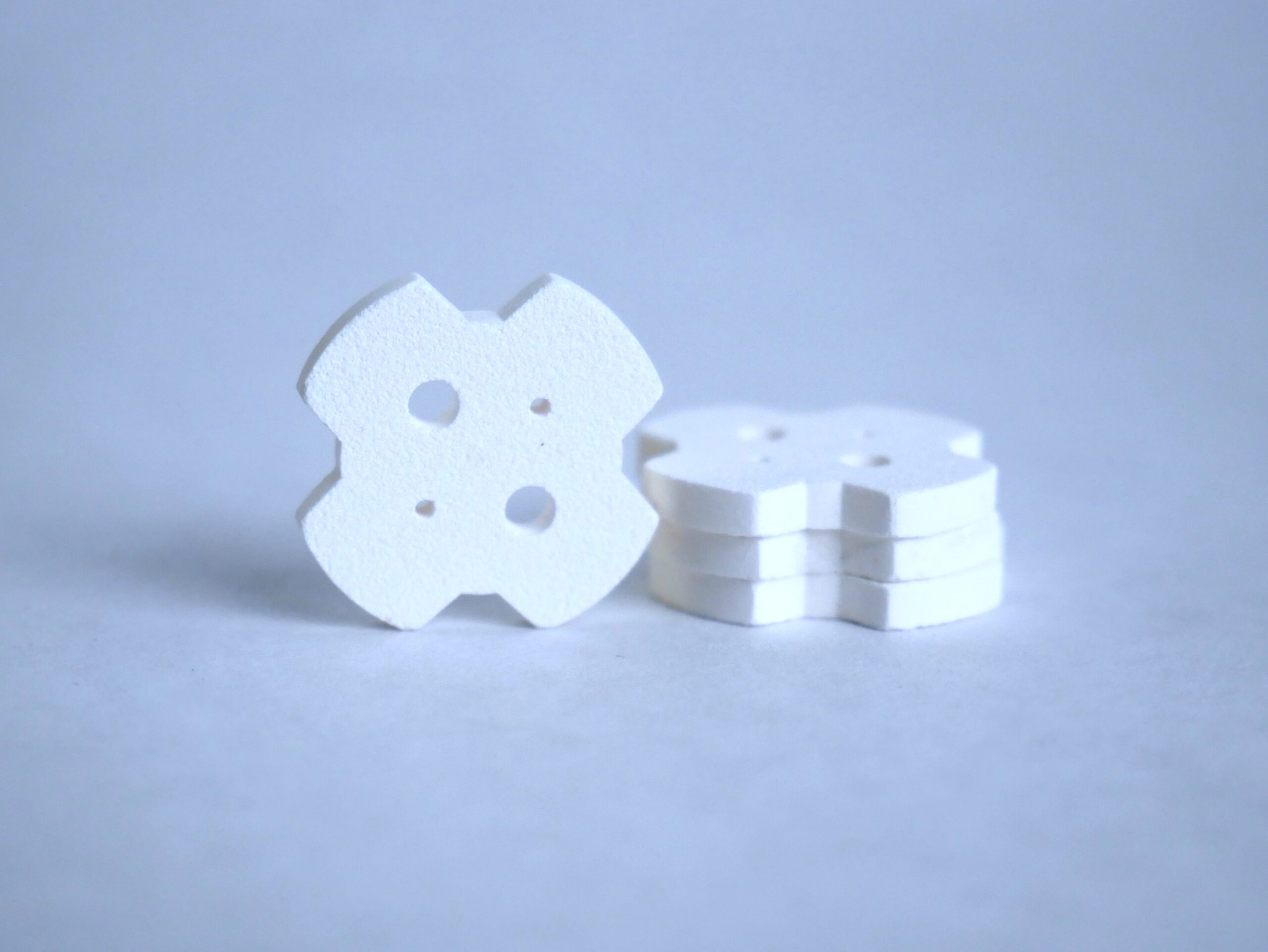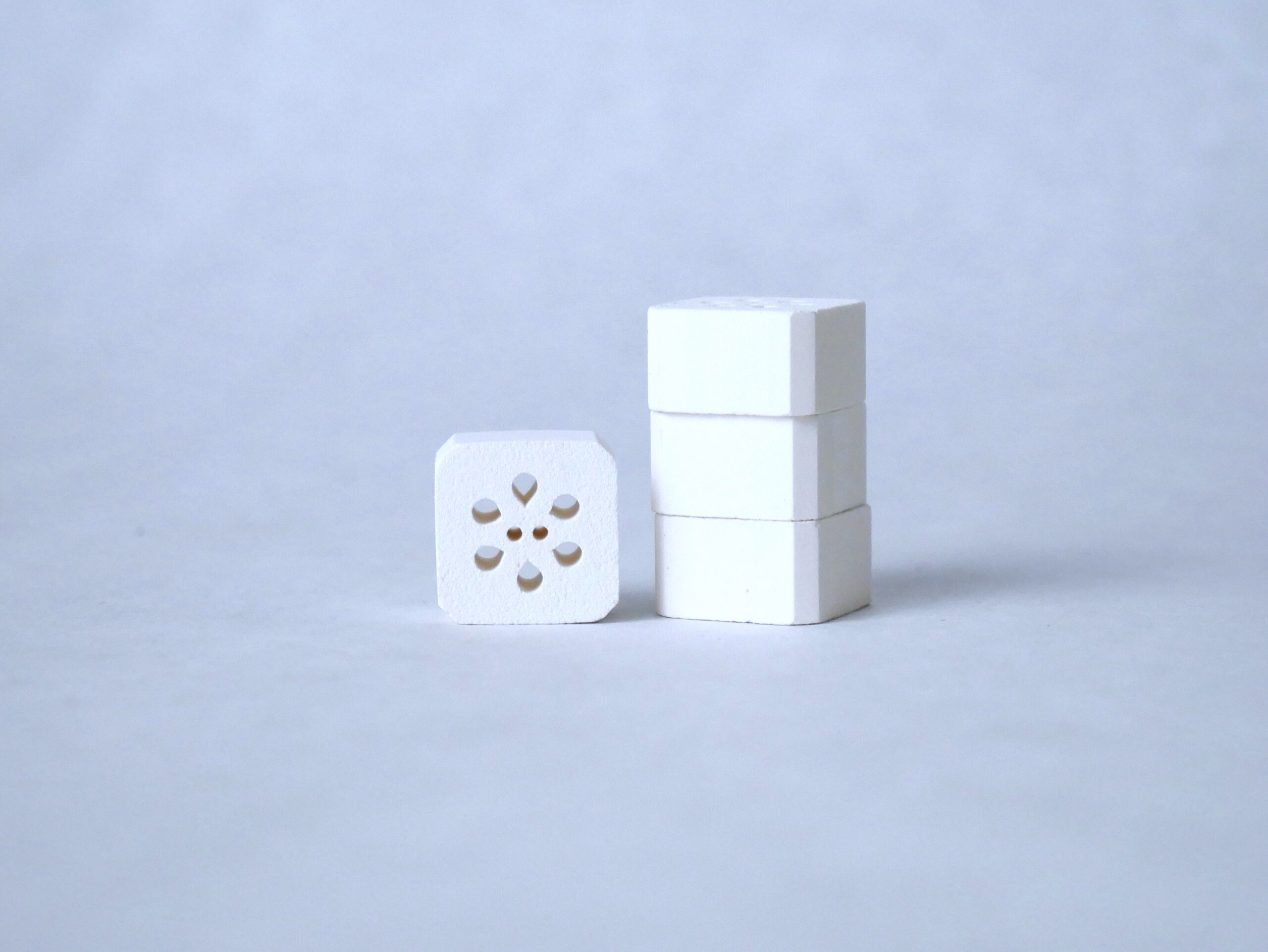





INTRO:
MgO spacers are used to facilitate the assembly of a cartridge heater. They serve dual roles of positioning the wind core into the center of the tubular metal sheath, and allowing the passage of MgO grain to be compacted into the annulus of the heater for thermal contact and electrical isolation.
TATEHO OZARK can manufacture most spacer geometries by extrusion and wafering to a finished thickness. This is an alternative fabrication method to the traditional dry pressing and sintering technique which is standard in the industry but has many shortcomings.
What are the differences between extrude/slice and traditional dry pressed parts?
ADVANTAGES
1) Extremely good flatness is achievable for some designs because the parts can be sliced after firing. Dry pressed parts may be prone to warping in firing giving concave or twisted parts.
2) Tooling is cheap and fast to obtain. By contrast, dry press tooling is complicated and very expensive., and requires more setup time. Short runs are almost impossible.
In some cases, the same tooling pinset (which forms the hole sizes and positions) can be used for a spacer and the matching core, which helps insure compatibility and fit.
3) Complex shapes are readily achieved and not limited by dry press design constraints. Holes can be easily repositioned or re-sized with minimal re-tooling investment.
4) Spacer thickness can easily be changed. You may be able to reduce your spacer cost by having multiple thickness available, as the price does not vary proportionally for thicker parts.
Limitations
1) Only two dimensional geometries can be made, i.e., no cavities, chamfers, or counterbores.
2) The thickness control is not equal to that possible with expert dry pressing. We use a cutting increment of .005″ to guarantee uniformity, which may skew the distribution to the edge of a tight thickness specification.
3) It is difficult to make “extra” strong or hard spacers due to the added difficulty of slicing. However, pre-sliced parts can be re-fired, but with the risk of warpage and extra dimensional variation.
TATEHO OZARK requires that the thickness tolerance be +/- .010” in order to coordinate with the slicing saw default of .005″ increments. Many legacy drawings simply specify the title block tolerance of +/- 0.005” for no technically important reason. Like dry pressing, the slicing method is infinitely variable, but irregular increments create additional cost and little potential for added value.
Description
MgO spacers come in a wide variety of geometric shapes, many of which seem to be dictated by habit and history and not by actual technical requirements. The wide variety of shapes and designs might be on account of dry pressing considerations and attempts to reduce tooling cost for small runs.
Designs which have been named include:
1) round grooved cores, with 2, 3, or 4 full radius grooves on the periphery
2) round scalloped cores, with 2 or 4 partial radius grooves
3) Triangular and square designs with flats or radii in the cutout area
4) Toothed and Lego type designs with square notches
5) Very complex snowflake and other configurations
Spacers made by the TATEHO OZARK method can not have recesses, cavities, or pockets on the longitudinal axis. We recommend a minimum thickness of 15% of the diameter.
Grades
CKM, BKM
All spacers are made from high quality electrical grade fused MgO. The typical MgO content is 98.5% MgO with appropriate limits for impurities and magnetic iron. Your certification paperwork may indicate one of the above designations, which are used internally to specify and engineer the perfect MgO grind and blend for your part.
For the purpose of naming the finished part, TATEHO OZARK will generally use the prefix “B”. Polygonal shapes will normally be named according to the size of the largest diagonal measurement or minimum superscribed circle.

